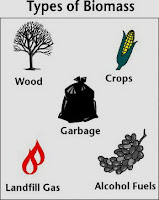Biofuels and Biorefinery

Biomass materials like oil-rich and sugar-rich crops are used for the production of liquid fuels. The main crops are sugar beet and oilseed rape. Bio-fuels produced in recent decades are biodiesel and bio-ethanol, which are used for the replacement of fossil fuels. New processes are developing to produce Hydrogen and biobutanol(from sugar beet) from biomass. In the initial period of biofuels, it was a question that does it could be commercialized because the food crops are used as raw material and bring an imbalance in food distribution worldwide.
Even though biofuels can be produced from various sources each having a unique method of producing it, there is the need for attaining a common fuel with the distinct specification which can be attained by the Biorefinery. The biomasses obtained from crops are referred to as first and second-generation crops.
The chemical process methods which are in practice are esterification, fermentation and thermochemical mechanism (pyrolysis). Based on the feedstock the methods are selected. For example, for oil from seed rape, esterification of the oil is done to produce biodiesel, for wheat straw it goes to hydrolysis and fermentation of the lignocelluloses to produce biodiesel and for wheat grains, the same process is followed with the starch obtained from it.

Biological Oxygen Demand(BOD), laboratory analysis
BOD value is an important factor in designing effluent treatment plants. It is taken as the controlling variable during balance equation development and flow rate determination between the equipment. Even though modern instrumental methods are available, their cost of operation is higher than analytical lab methods. In brief BOD value is obtained by comparing the dissolved oxygen value of the sample over five days.
Analytical procedure: 5 days method
Testing Apparatus:
1. Bottle with stopper (250ml)
2. Incubator
Chemical Reagents:
- NaOH solution 1N.
- HCl 1N.
- Sodium sulphite solution:– Dissolve 1.5g in a litre of water. (Note: Don’t mix with the previous test solution)
- Phosphate buffer solution: –Dissolve 8.5g KH3PO4, 21.75g K2HPO4, 33.4g of Na2HPO4.H2O and 1.7g of NH4Cl in water(500 ml) and make the 1-litre solution from it. 7.2 pH must be maintained.
- MgSO4.7H2O solution – Dissolve 22.5g in water and make up to a litre in a volumetric flask.
- CaCl2 solution – Dissolve 27.5g in water added to a 1-litre volumetric flask.
- FeCl36H2O solution – Add water to 0.25g and make it a 1-litre solution.
- Seeding material – Effluent water from the sample point.
Test Procedure:
- Sample treatment: pH of the sample is adjusted to 7 using acid and base solutions.
- Residual chlorine was removed by adding sodium sulphite solution.
- Store the dilution water at 20 deg C and use it at an approximate temperature. For 1 litre of water 1ml each of phosphate buffer solution, magnesium sulphate solution, calcium chloride solution and ferric chloride solution is added. 0.1to 1 per cent seeding material added to dilution.
- 5 per cent of dilution is done for the sample
- 500 ml of seeded dilution water taken in a 1liter jar and makeup with dilution water to 1 lit. Pour the 1-litre solution into two glass-stoppered bottles. Lower concentration samples were also prepared as above said.
- Initial DO concentration is tested for one of the two sample bottles and a blank one. Incubate the bottles at 20 deg C for 5 days. After 5 days, DO is estimated for the dilution and the blank. BOD can be estimated by the following formula:
Calculation:
BOD = (D1-D2)-(C1-C2) F/P
- D1 initial DO sample.
- D2 DO after incubation of sample.
- C1 Seeded dilution water initial DO
- C2 Seeded dilution water after incubation DO
- F =ratio of the seed in the sample to that in the control, that is per cent seed in D1 divided by per cent seed in C1 and
- P = decimal fraction of the sample used.
Related Topic
- Electrical Transformers | Switchgear Protective Device | Power Consumption Of Appliances And Electrical Apparatus
- Simple And Differential Distillation Experiment Procedure
- Distillation Column Diagram | EFFECT IN TOWERS AND COLUMNS
- Hybrid Distillation And Pervaporation System | Distillation And Distillation Column
- How To Design And Construct A Distillation Column Along With Mechanical Parameters? What Are The Stepwise Procedures For Designing The Distillation Column?
- An Introduction To Diffusion Concept In Mass Transfer
- Flow Through Packed And Fluidized Beds | Fluid Mechanics | Flow Through Packed And Fluidized Beds
- Fluid Catalytic Cracking Unit Flow Sheet And Process Equipment | Fluid Catalytic Cracking (FCC)


